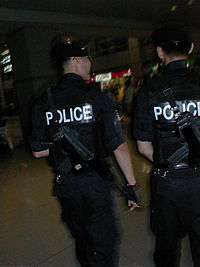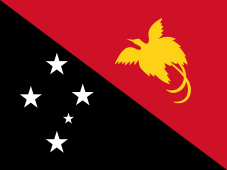Daewoo Precision Industries K2
| Daewoo Precision Industries K2 | |
|---|---|
|
The Daewoo Precision Industries K2 assault rifle | |
| Type | Assault rifle |
| Place of origin | Republic of Korea |
| Service history | |
| In service | 1984–present |
| Used by | See Users |
| Wars |
Gulf War War in Afghanistan[1] Iraq War[1] Conflict in the Niger Delta 2006 Fijian coup d'état Iraqi insurgency |
| Production history | |
| Designer |
Agency for Defense Development S&T Motiv |
| Designed | 1972–1983 |
| Manufacturer | S&T Motiv[2] |
| Unit cost | US $727.00[3] |
| Produced | 1982–present |
| Variants | See Variants |
| Specifications | |
| Weight | 3.26 kg (7.2 lb) |
| Length |
980 mm (39 in) (extended) 730 mm (29 in) (folded) |
| Barrel length | 465 mm (18.3 in) |
|
| |
| Cartridge |
5.56×45mm NATO .223 Remington |
| Action | Gas operated, Rotating bolt (long-stroke piston) |
| Rate of fire | 750 RPM |
| Muzzle velocity |
920 m/s (3,000 ft/s) (K100) 960 m/s (3,100 ft/s) (KM193) |
| Effective firing range |
600 m (K100) 460 m (KM193) |
| Maximum firing range | 2,400 m (K100) |
| Feed system | Various STANAG Magazines. |
| Sights | Iron sights |
Daewoo Precision Industries K2 assault rifle was developed by the South Korean Agency for Defense Development and manufactured by S&T Motiv (formerly Daewoo Precision Industries). It is currently the standard service rifle of the Republic of Korea Armed Forces. Shoulder-fired and gas-operated, the K2 is capable of firing both 5.56×45mm NATO and .223 Remington ammunition. The K2 supplanted the M16A1 assault rifle for the Republic of Korea Armed Forces since its adoption in 1984.[4]
Development

Although the K1 entered service 3 years before the K2, the development of the K2 assault rifle started many years earlier. Facing the eventual expiration of the Republic of Korea's license to produce the M16A1 (Colt Model 603K), president Park Chung-hee, who strongly believed in self-reliance in national defense, ordered the development of an indigenous standard military firearm. Engineers with the Agency for Defense Development began the project named XB rifle in 1972, resulting in the K2 assault rifle in 1983. Colt alleged the design was copied from its M16 and sued unsuccessfully.
Design

Six different prototypes were made during the XB development. Of the 6 designs, the XB6 was selected. Some parts of the XB6 resembled FN FNC such as the suppressor and sights. Further development of the XB6 evolved into the XB7 and finally the XB7C, also known as the XK2. Externally similar in appearance to the AR18, the K2 uses polymer for the forearm, pistol-grip and side-foldable buttstock. The fire control system and bolt carrier group are derived from the American M16 rifle,[5] but few of the parts, including the bolt and carrier, are interchangeable with the M16. The gas operating system is derived from the AKM. The K2 uses the same magazine as the M16. The barrel rifling has 6 grooves, 1-in-7.3 right hand twist. The K2 has 3 selective firing modes: semi-auto, 3-round burst, and full automatic.
The K2 can be equipped with the DPI K201, an undercarried 40×46mm single shot grenade launcher patterned after the American M203.[1] The Republic of Korea Armed Forces originally planned to replace the entire K2 with new S&T Daewoo K11 dual-barrel air-burst weapon. However, high cost and skepticism over the effective firepower of the 20mm grenade led to the decision to provide 2 K11s to each squad, keeping 2 grenadiers as well. Consequently, the standard 9-person infantry squad of the Republic of Korea Armed Forces is currently equipped with 2 K2 rifles, 2 K2 rifles with K201 grenade launcher, 2 K11 DAWs, 1 K3 light machine gun, and the rest with either K1 or K2.
The K2 is also sometimes used with bipods and 4× magnification scopes, in a role similar to the Designated Marksman Rifle. A more modern way to accessorize the K2 and K1 is to mount a now (limited) standard issue PVS-4K Rail Integration System. It consists of an aluminum body with a long, uninterrupted rail for optical/red-dot and night-vision sights and three other rails located on the bottom and both sides. The rails are of the Picatinny-type.
K1 and K2 weapons systems
While the K1A SMG is commonly regarded as a SMG version of the K2, the K1 is a separate weapon altogether.[6] The primary differences between the two weapons include: development development time and intent (the K1 took less time to develop and entered service sooner than the K2, and was developed originally as a submachine gun because it was intended to replace the M3 Grease Gun; the K2 was developed from the start as a service rifle); rifling (K1: 1-in-12 twist; K2: 1-in-7.3 twist); and gas system (the K1 uses a direct impingement gas system, while the K2 uses a long stroke gas piston system). In addition, parts are not interchangeable between the two weapons even though they can use the same cartridge (KM193(.223 Remington) 5.56 caliber; the K2 can also utilize the K100(SS109) 5.56 caliber round).
Variants
- XB: At least 6 versions (XB1 to XB6) of prototype were made.
- XB6: Selected design among the prototype.
- XB7: Further development of the XB6.
- XB7C: Final experimental prototype. Also known as XK2.
- K2: Mass-produced variant.
- AR-100: Semi-automatic 5.56×45mm NATO version for civilian market.
- DR-200: Semi-automatic .223 Remington version for civilian market.
- DR-300: Semi-automatic 7.62×39mm version for civilian market.
- K2A: Enhanced version featuring a Picatinny rail with foregrip and either foldable or extendable stock.[7]
- K2C: Carbine version of K2 rifle with Picatinny rail, M4-type buttstock, barrel reduced to 310 mm (12 in), and K11 suppressor.[8][7]
- K2C1: New variant featuring a quad accessory rail, full-length 1913 Picatinny optics rail, and AR-15-style six position collapsing and foldable stock. Comes in two barrel lengths, 305 mm (12 in) and 465 mm (18.3 in).[9] It was officially sent into production in March 2016 with first deliveries in June 2016.[10]
Users
 Bangladesh: Used by Special Warfare Diving And Salvage operators. Uses K2C variant.[11]
Bangladesh: Used by Special Warfare Diving And Salvage operators. Uses K2C variant.[11] Ecuador: Purchased in 2011.[12]
Ecuador: Purchased in 2011.[12] Indonesia: 210 K2 rifles purchased in 2008[13] and 2011.[12]
Indonesia: 210 K2 rifles purchased in 2008[13] and 2011.[12] Iraq: K2C used by Iraqi special operations forces Golden Division (formerly Golden Brigade).[14]
Iraq: K2C used by Iraqi special operations forces Golden Division (formerly Golden Brigade).[14] Republic of Korea: A standard-issue rifle of the ROK Armed Forces since 1984. Used extensively by the Korean contingent in Operation Enduring Freedom and the Iraq War.[1] Small numbers of the K2A and the K2C are being tested by the army and the special forces. If test results meet the requirement, then mass production will start in 2015. Additional production will allow the K2A to supplant the M16A1 as the standard service rifle for active troops and pass these to reserve forces by 2017, whilst the K2C will replace K1A.[15]
Republic of Korea: A standard-issue rifle of the ROK Armed Forces since 1984. Used extensively by the Korean contingent in Operation Enduring Freedom and the Iraq War.[1] Small numbers of the K2A and the K2C are being tested by the army and the special forces. If test results meet the requirement, then mass production will start in 2015. Additional production will allow the K2A to supplant the M16A1 as the standard service rifle for active troops and pass these to reserve forces by 2017, whilst the K2C will replace K1A.[15] Malawi: Received 1,100 K2 and 1,000 K2C in 2012.[16]
Malawi: Received 1,100 K2 and 1,000 K2C in 2012.[16] Mexico: Purchased in 2011.[12]
Mexico: Purchased in 2011.[12] Nigeria: First customer of K2. Purchased 3,000 in 1983, and another batch in 1996.[17] Additional 30,000 rifles were sold in 2006.[18]
Nigeria: First customer of K2. Purchased 3,000 in 1983, and another batch in 1996.[17] Additional 30,000 rifles were sold in 2006.[18] Papua New Guinea: Purchased K2C in 2013.[19]
Papua New Guinea: Purchased K2C in 2013.[19] Peru: Used by the Infantería de Marina del Perú (Peruvian Naval Infantry).[20]
Peru: Used by the Infantería de Marina del Perú (Peruvian Naval Infantry).[20] Senegal: Purchased 100 K2 rifles in 2003.[17]
Senegal: Purchased 100 K2 rifles in 2003.[17]
Non-State Actors
- Islamic State[14]
Replacement versus upgrades
S&T Daewoo (now S&T Motiv) proposed the XK8, a 5.56×45mm NATO bullpup version of the K2 in early 2000. After a series of field tests, the XK8 was rejected by the South Korean military and was never mass-produced.
More recently, the development of the S&T Daewoo K11 dual-barrel air-burst weapon, which uses 5.56×45mm NATO and 20×30mm air-burst grenade, prompted the Republic of Korea Armed Forces to plan for the replacements of all K2 rifles in service with the K11, making K11 the standard service rifle for the armed forces. However, due to the K11's extremely high cost and weight for a standard rifle, the armed forces scrapped its original plan and decided to provide 2 K11 per squad in order to increase firepower. The K2 was retained as the standard service rifle as a result.
In 2014, an upgraded K2 rifle, the K2A was introduced, and the Republic of Korea Army is performing field tests. After the tests are complete, the K2A will be mass-produced and will join the armed forces in 2015. Additional production of K2 rifles will remove the M16A1 from active service completely by 2017.
See also
- AK-47
- FN FNC
- M16 rifle
- Armalite AR-18
- Daewoo Precision Industries K1
- S&T Daewoo XK8
- List of assault rifles
References
- 1 2 3 4 Archived July 7, 2011, at the Wayback Machine.
- ↑ "Business Outline, Defense Business". S&T Daewoo. Retrieved 2010-07-01.
- ↑ "Daewoo Precision Industries K2 – Survival And Prosperity". survivalandprosperity.com. Retrieved 2014-01-11.
- ↑ "The 5.56 X 45mm: 1980-1985". The Gun Zone. Retrieved 2008-10-30.
- ↑ "Daewoo K2 Assault Rifle". Gun's World. Retrieved 2008-10-30.
- ↑ Rifles n Guns' Daewoo K1 Page. Retrieved on October 27, 2008.
- 1 2 Weapons of the Republic of Korea Marine Corps - SAdefensejournal.com, 4 September 2015
- ↑ "K계열 6가지 소총 직접 쏴보니". 아시아경제.
- ↑ S&T Motiv Shows Off K2C1 Improved Daewoo Rifle at KDECIF 2016 - Thefirearmblog.com, 16 June 2016
- ↑ http://www.janes.com/article/63604/dx-korea-2016-s-t-motiv-details-updated-roka-5-56-mm-service-assault-rifle
- ↑ Bangladesh Military Forces. "Bangladesh Navy Special Warfare Diving And Salvage (SWADS)". Retrieved 2010-01-14.
- 1 2 3 "[파워 경제인] 김택권 S&T대우 대표". 서울경제. 2011-09-15.
- ↑
- 1 2 http://www.thefirearmblog.com/blog/2016/09/30/korean-k2c-iraq-sides/
- ↑ "내년부터 軍장병 맞춤형 소총 보급". 아시아경제.
- ↑ "유용원의 군사세계". bemil.chosun.com. Retrieved 11 January 2014.
- 1 2 "한국의 무기 이야기". Segye.com. Retrieved 2014-02-21.
- ↑ "한국일보 : 나이지리아, K2 소총 3만정 수입키로". news.hankooki.com. Retrieved 11 January 2014.
- ↑ "S&T모티브, 멕시코, 파푸아뉴기니 軍․警에 총기 수출". S&T Motiv. April 10, 2013.
- ↑ Archived May 25, 2009, at the Wayback Machine.
External links
| Wikimedia Commons has media related to Daewoo K2. |

